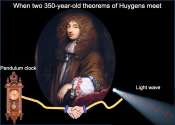Dragonfly eyes inspire new microlens array processing technique
Industry 4.0 requires simple solutions for complex functions. Optical sensors, such as pinhole cameras, can deliver a depth of focus and reasonable resolution, but they suffer from low intensity for reliable and fast imaging. ...









